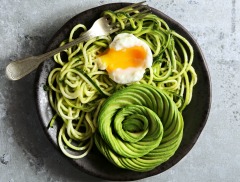Don't just meal plan... meal plan intelligently - with Meal Genius! Sign up for our free newsletter to get delicious recipes, sample meal plans and a whole lot more!
Grape Leaves
Grape leaves, the large green leaves of the grapevine, are often used by Greek and Middle Eastern cooks to wrap foods for cooking, as with dolmas.
In addition to wrapping foods, grape leaves can be used as decorations or garnishes, or in salads.
The Benefits
- Special diets: Autoimmune Paleo Diet, Candida Diet, Diabetic, Elimination Diet, Gluten-Free Diet, Gluten-Free/Dairy-Free Diet, Grain-Free Diet, Low Acid Diet, Low Carb Diet, Low FODMAP Diet, Low Histamine Diet, Low Oxalate Diet, Low Starch Diet, Paleo Diet (Light), Paleo Diet (Strict), PCOS Diet, Pescetarian Diet, Primal Diet, Thyroid Diet, Vegetarian Diet, Whole Food
- Excellent Source of:
- Good Source of:
- Preferences: No Fish, No Red Meat, No Pork, No Eggs, No Shellfish, No Gluten, No Nuts, No Seeds, No Soy, No Dairy, No Poultry, No Corn, No Peanuts, No Molds, No Pseudograins, No Coconut, No Yeast, No Citrus, No Nightshade, No Legumes, No Grains, Low Carbohydrate, Low Cholesterol, Low Fat, Low Sodium, Low Sugars, Low Saturated Fat
Related Foods
Related Recipes
Selecting and Storing
It's unusual to find fresh grapeleaves, so look for canned grape leaves packed in brine. They should be rinsed before using to remove some of the salty flavor. Fresh grape leaves must be simmered in water for about 10 minutes to soften them enough to be pliable.









